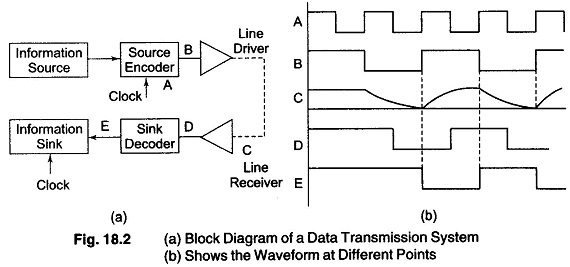Data Transmission System:
A typical data transmission system contains the information source from which data has to be transmitted through a suitable medium to the destination, termed the information sink. The information source can be a computer terminal, a digitized transducer output, or any other device generating a stream of bits at the rate of one bit every tB seconds.
The information rate of the system is therefore 1/tB bits/s. As shown in Fig. 18.2, the information source feeds to a source encoder which performs logic operations on the data, on the associated clock, and perhaps on past data bits as well. Hence the source encoder produces a stream of data controlling the line drivers.
The line driver interfaces the internal logic levels of the sources (TTL, MOS, etc.) with the transmission line. The transmission line in turn carries the signal produced by the line driver to the line receiver.
The line receiver makes the decision on the signal logic state by comparing the received signal to a decision threshold level, and the sink decoder performs the logic operations on the binary bit stream recovered by the line receiver.
The recovered binary data passes to the information sink, which is the destination for the information-source data.
